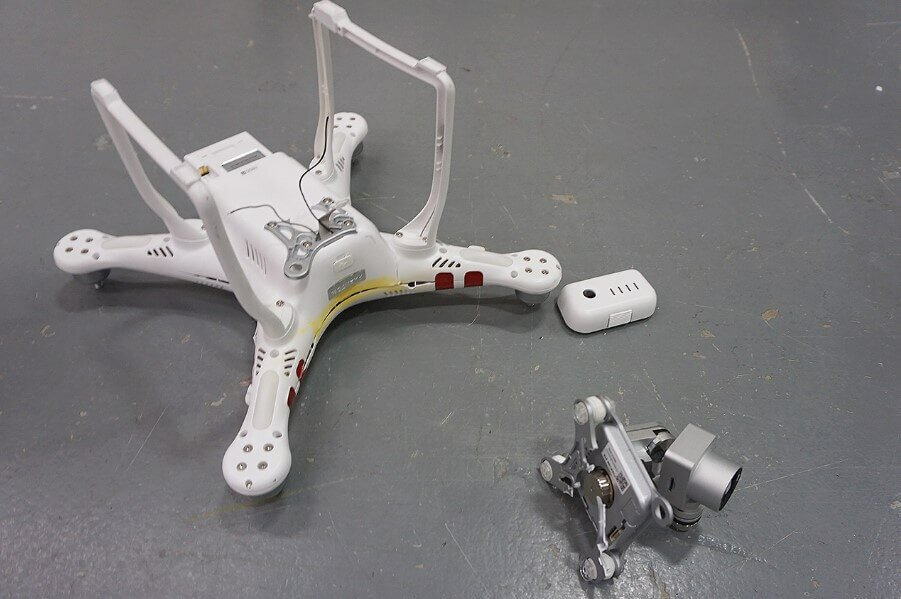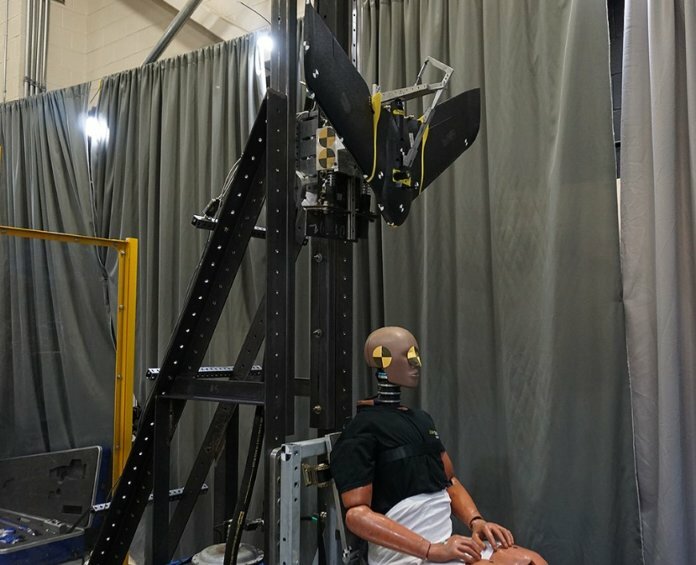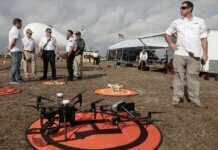The Alliance for System Safety of UAS through Research Excellence (ASSURE) research team has released the findings of its air-to-ground collision study of small unmanned aircraft systems (sUAS), which ran for 18 months.
The ASSURE team includes The University of Alabama in Huntsville (UAH), Mississippi State University, the National Institute for Aviation Research at Wichita State University, and The Ohio State University.
The research team was sponsored by the Federal Aviation Administration (FAA) to assess the injury potential of various sUAS of different material properties and construction. The team conducted fixed-wing and multi-rotor drone failure flight testing and aerodynamic modeling, full anthropomorphic test device (ATD) impact testing, simplified head and neck only ATD impact testing, post mortem human surrogate impact testing, ATD and human-body model impact simulations, and high-fidelity head and neck only impact simulations.
Over 512 impact tests and simulations were conducted using 16 different drones, as well as various objects and payloads (batteries, wood blocks, etc.) with weights ranging from 0.71 lbs. to 13.2 lbs. Testing also included evaluation of heavier sUAS using mitigations to reduce potential for injury, such as sUAS under parachutes.
“The research results give the FAA a better picture of potential injuries and their severity, based on established science,” says Col (Ret.) Stephen P. Luxion, executive director of ASSURE. “Earlier testing of injury data strongly supported our assessment that long-standing fatality data was overly conservative and largely not applicable to injuries resulting from impacts by more elastic sUAS. Additional testing was needed to develop a more accurate, science-based test methodology that may be used by the FAA, sUAS manufacturers and operators of sUAS to evaluate the injury risk potential.”

The scope of earlier studies involved testing only a single vehicle and a limited number of impact tests, and there was no correlation of the testing results to actual human injury.
The team says its new research findings and data may help inform the FAA and industry of operational limitations for sUAS when operating over people. It will also provide new data from which sUAS design specifications may be developed to further reduce risk to people and property on the ground.
“The Ground Collision Severity Evaluation does not seek to advocate for any new rules or regulations but, rather, may inform the rulemaking process by increasing the body of scientific knowledge for the FAA, industry and UAS manufacturers,” says David Arterburn, director of UAH’s Rotorcraft Systems Engineering and Simulation Center and principal investigator for the study. “Rather than speculate on the possibility for injury, the new report also allows manufacturers access to sufficient data that could be used to create new industry consensus standards that reduce the potential of human injury risk for flight over people operations.”
He adds, “The injury impacts conducted in the study were controlled impact tests of the worst case, using those variables capable of transferring the most energy to a human. Even in these controlled studies, slight variations of the vehicle orientation or location of impact with the human, just prior to impact, reduced the injury potential. These results showed that these worst-case impacts are very difficult to achieve, even under controlled-impact test conditions.”
The full study can be accessed here.









